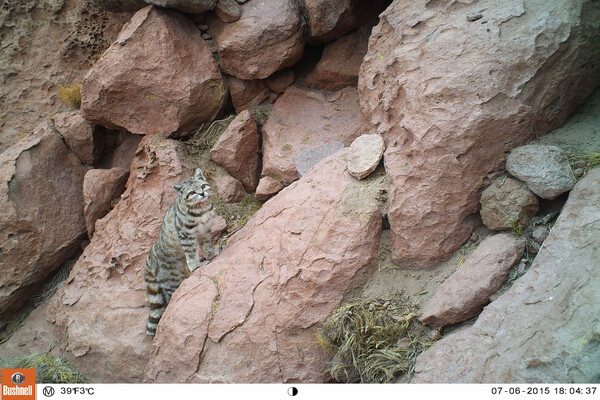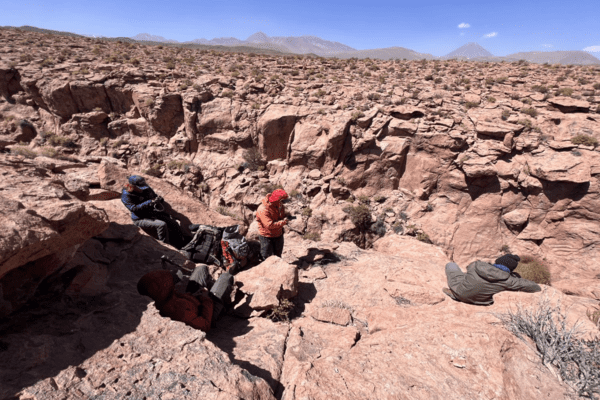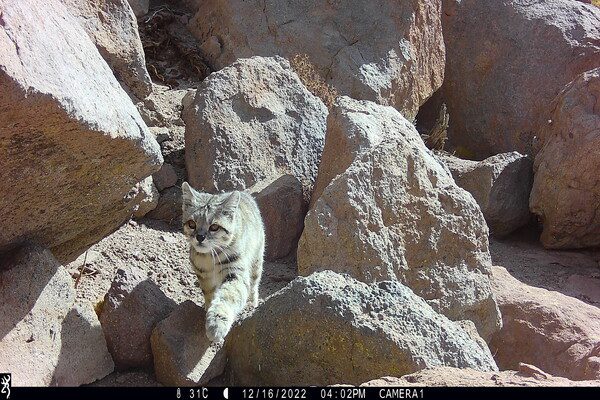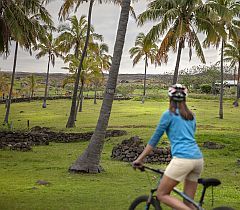Over 10 years exploring the mysteries of the Atacama Desert
Viewed from space, the Atacama Desert resembles a lunar landscape on our planet. This place, considered one of the most difficult on earth to inhabit, is where Explora took on the challenge of creating and administering northern Chile's largest Private Conservation Reserve, which in 2010 adopted the name Puritama Conservation Reserve.

Located less than 20 km from the Eduardo Avaroa National Andean Wildlife Reserve in Bolivia, the Puritama Reserve has the potential to form a small conservation corridor between the two countries. Its over 7,000 hectares are home to a wide range of plants formations and diverse wildlife.
One outstanding achievement for the Reserve was the excellent work by the environmental consultancy Flora & Fauna Chile, whose camera traps installed in Puritama managed to capture the first image of an Andean cat (Leopardus jacobita), an endangered species, in the Antofagasta Region. Ancient ancestral cultures revered the Andean cat, a feline slightly larger than a domestic cat, as the spirit of the mountain, protector of livestock or a water deity. The discovery of this species underscores the importance of conservation in this region and highlights the Reserve’s commitment to protecting wildlife diversity.

This finding’s utmost importance prompted Explora, the consultancy Flora & Fauna and the NGO Alianza Gato Andino (AGA, Andean Cat Alliance) to begin talks. The main initiative consisted in implementing a rigorous monitoring program for this species in the Puritama Reserve to identify the main areas where it lives. This ambitious project was begun in 2015 with the installation of around 20 camera traps. Monitoring is currently carried out in close collaboration between Explora and AGA, which have been working together for a total of 8 years.
But the road to success was not without obstacles during this time, as different adversities and financial challenges arose. Despite this, Explora’s firm commitment to conservation provided a solid financial base and strong support to continue the monitoring alongside the ongoing and persistent work by AGA members in the field.

The dedication and teamwork have paid off with extremely unique images. We have documented Colo colo cat (Leopardus colocolo) cubs, with one of them observed just a few days after birth as its mother carried it in her mouth. And we have been fortunate enough to be able to follow its growth with an image of the same cub five months later. In addition, over the last few years an Andean cat (Leopardus jacobita) cub and several puma (Puma concolor) cubs have been observed. They represent a positive indicator for ecosystem conservation, as they are evidence of the availability of shelter and food, in addition to active reproductive populations in the area.
In addition to these sightings, we have been fortunate enough to capture a video of an Andean cat (Leopardus jacobita) making vocalizations, yawning and marking some rocks with urine. Various rodent species have also been detected, including an abundant population of vizcachas (Lagidium viscacia), the Andean cat’s main prey, some white-bellied fat-tailed mouse opossums (Thylamys pallidior, small marsupials), lizards and many birds, such as the colorful mountain parakeets (Psilopsiagon aurifrons). The camera traps have provided a trove of data and remarkable images about this ecosystem.
However, efforts have not just been limited to the use of camera traps, as AGA has collected stool samples for genetic identification. To date, it has been confirmed that one of the samples collected in the Reserve belongs to an Andean cat (Leopardus jacobita), making a significant contribution to the genetic population analysis that AGA is carrying out as it allows estimating the relationships between the different Andean cat (Leopardus jacobita) populations in terms of their distribution and helps to improve conservation strategies for these different populations.
Taking our commitment to estimate this threatened feline’s population density a step further, a standardized methodology has been implemented that aims to identify both the right as well as left side of each cat, as all individuals have unique patterns. To achieve this, the camera traps were positioned in a grid that is adjusted to the Reserve’s area. In addition, two camera traps with higher image quality will be installed opposite each other in the most successful sighting points. This step is essential to achieving our goal of estimating the population density of these felines.
In many ways, this work that has been done over the years becomes a source of inspiration for other companies, institutions and society as a whole. It exemplifies how collaboration for conservation can overcome a wide range of challenges. It also highlights how nature tourism can have a powerful impact on conservation. In this sense, the partnership between Explora and AGA not only helps to raise visibility, but also serves as a paradigm of how to make responsible and committed tourism feasible.

